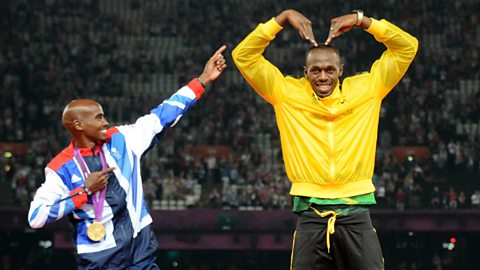Definitions and descriptions of the principles of training
The principles of training should be thought of as the 'golden rules' of making fitnessThe ability to meet the demands of the environment. training work for the individual participant. Following these golden rules will help to guarantee success and will carry athletes towards their training and performance goals. All training is aimed at creating long-term physical changes in the body systems. These changes are referred to as adaptationA feature of an organism's body which helps it to survive..
An athlete demonstrates the different regimes she follows to keep fit
The acronym SPORT can be used to remember the main principles:
- Specificity
- Progressive
- Overload
- Reversibility
- Tedium
Specificity (S) - training must be relevant to the individual and their sport. This can be achieved by tailoring training specifically for the sport or even the position that the individual plays, the muscle groups that they use the most or the dominant energy system of the athlete. For example, a 100 m sprinter is likely to train very differently to a 10 km racer despite them both being track athletes. The sprinter will focus on speed and power while the distance runner will train for cardiovascular fitness and the ability to work at high intensity aerobically.

Progressive overload (P and O) - training frequency, intensity, time or type (FITT – see below) must be increased over the training period to ensure that the body is pushed beyond its normal rhythm. Increases must be gradual so that the athlete avoids a plateau in performance or, worse, injury.
Reversibility (R) - systems reverse or de-adapt if training stops or is significantly reduced or injury prevents training from taking place. It is essential to avoid breaks in training and to maintain the motivateTo raise the level of determination to succeed. of the athlete.
Tedium (T) - athletes need variety in their training to prevent boredom but also some types of overuse injuries such as strains or even stress fractures. The principle of tedium is applied when a trainer builds variety into the training by changing the training method.
When designing a training programme the FITT principles should also be applied.
FITT - (Frequency, Intensity, Time, Type) - Frequency is increased by training a greater number of times each week. Intensity is increased by lifting a greater resistance, such as with weight training, or by training at a higher percentage of maximum heart rate (maxHR). This can be done either as continuous or interval training. Time can be manipulated by training for longer, reducing recovery times or by completing a greater number of sets or repetitions (also known as reps). Type of training is manipulated by offering a variety of training types and experiences to the athlete by combining training methods.